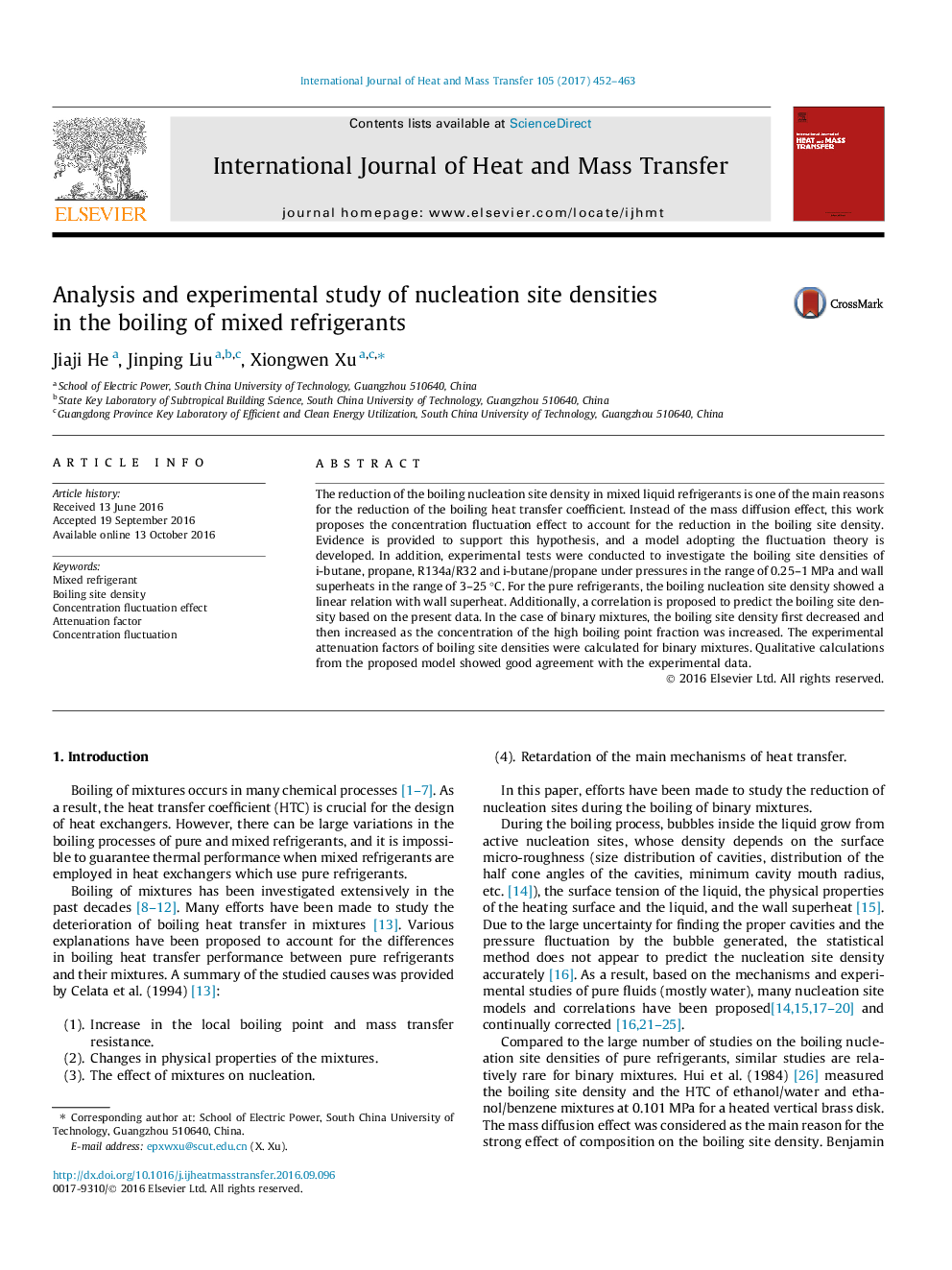| Article ID | Journal | Published Year | Pages | File Type |
|---|---|---|---|---|
| 4994706 | International Journal of Heat and Mass Transfer | 2017 | 12 Pages |
â¢The concentration fluctuation effect was proposed to account for the reduction of boiling site density.â¢A model adopting the fluctuation theory was developed to calculate the concentration fluctuation effect.â¢Experimental tests were conducted to investigate the boiling site density of pure and mixed refrigerants.â¢Based on the present data, a correlation is proposed to predict the boiling site density for pure refrigerants.â¢Attenuation factors were calculated for the boiling site densities of binary mixtures.
The reduction of the boiling nucleation site density in mixed liquid refrigerants is one of the main reasons for the reduction of the boiling heat transfer coefficient. Instead of the mass diffusion effect, this work proposes the concentration fluctuation effect to account for the reduction in the boiling site density. Evidence is provided to support this hypothesis, and a model adopting the fluctuation theory is developed. In addition, experimental tests were conducted to investigate the boiling site densities of i-butane, propane, R134a/R32 and i-butane/propane under pressures in the range of 0.25-1 MPa and wall superheats in the range of 3-25 °C. For the pure refrigerants, the boiling nucleation site density showed a linear relation with wall superheat. Additionally, a correlation is proposed to predict the boiling site density based on the present data. In the case of binary mixtures, the boiling site density first decreased and then increased as the concentration of the high boiling point fraction was increased. The experimental attenuation factors of boiling site densities were calculated for binary mixtures. Qualitative calculations from the proposed model showed good agreement with the experimental data.
